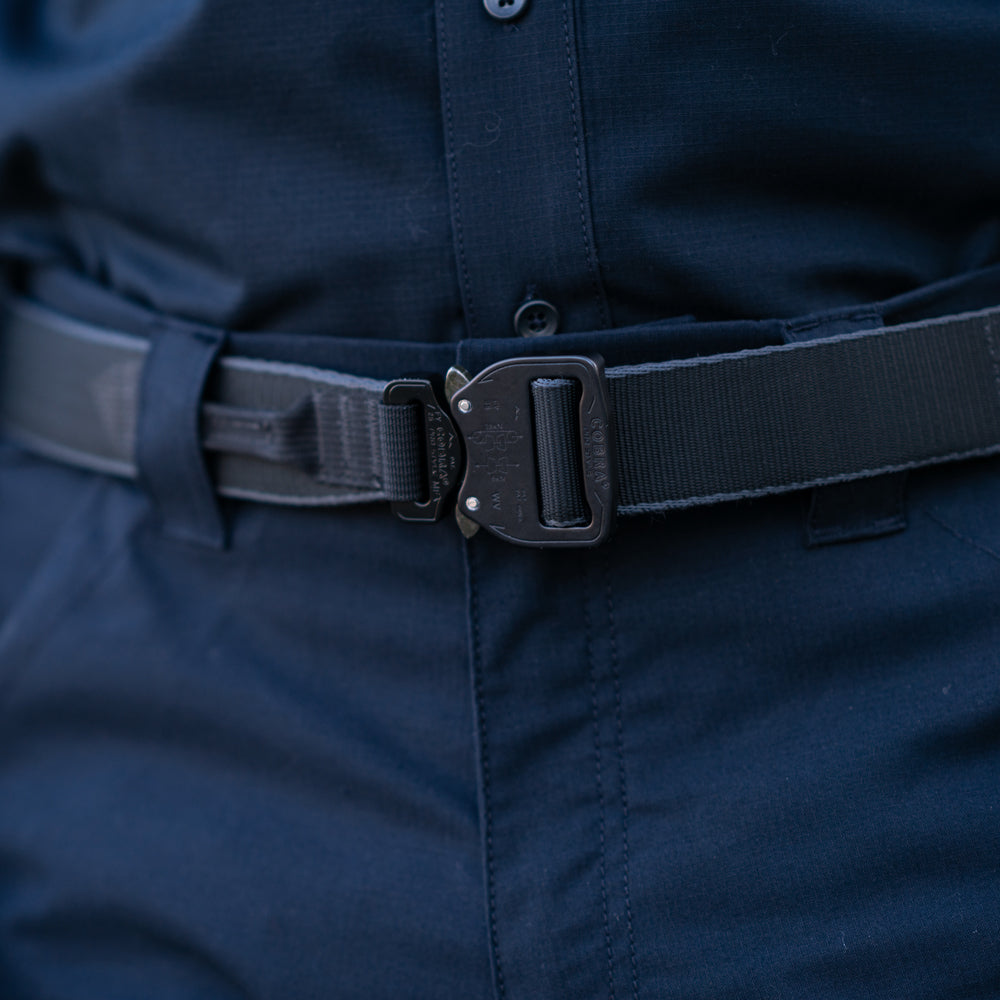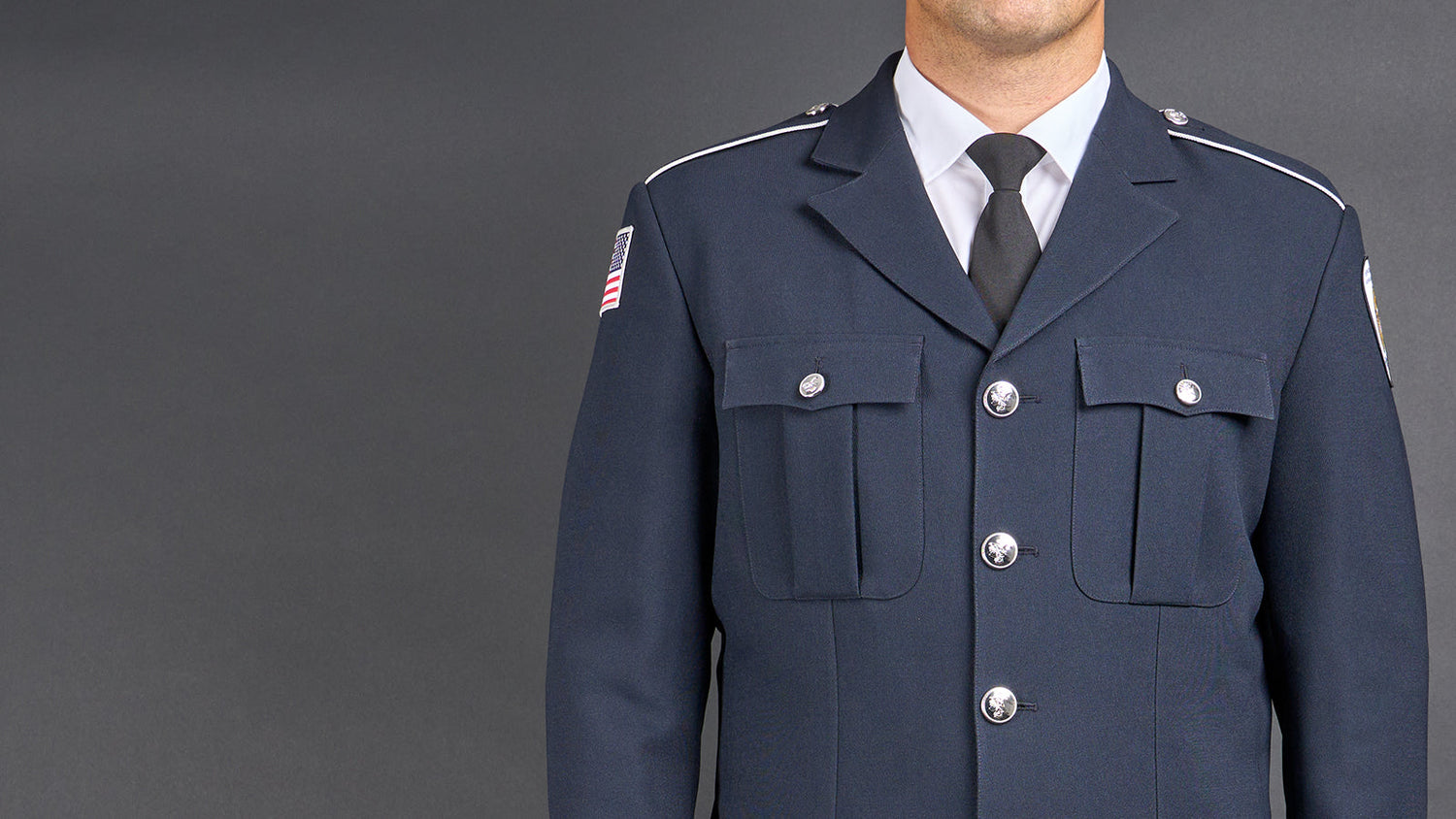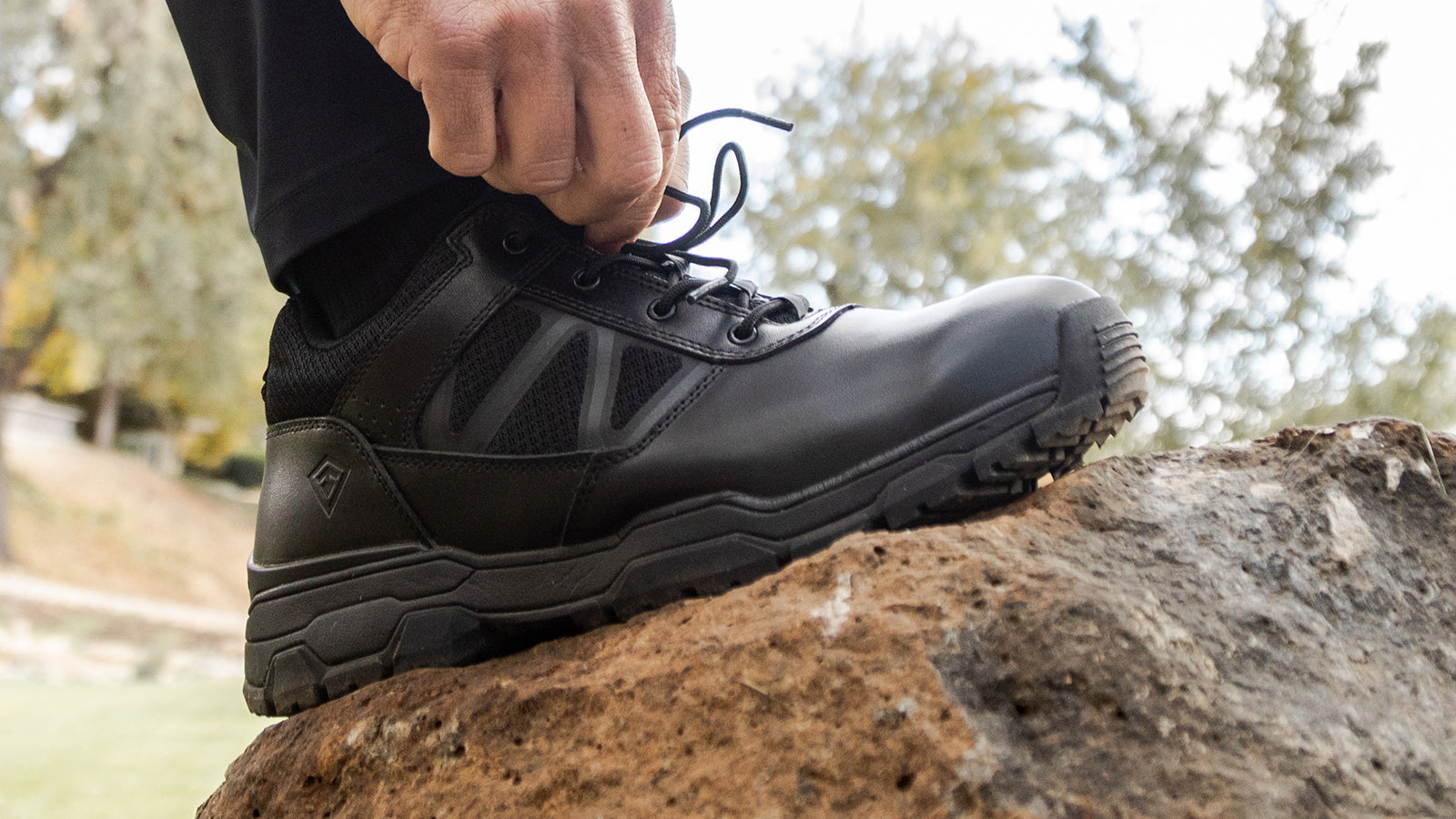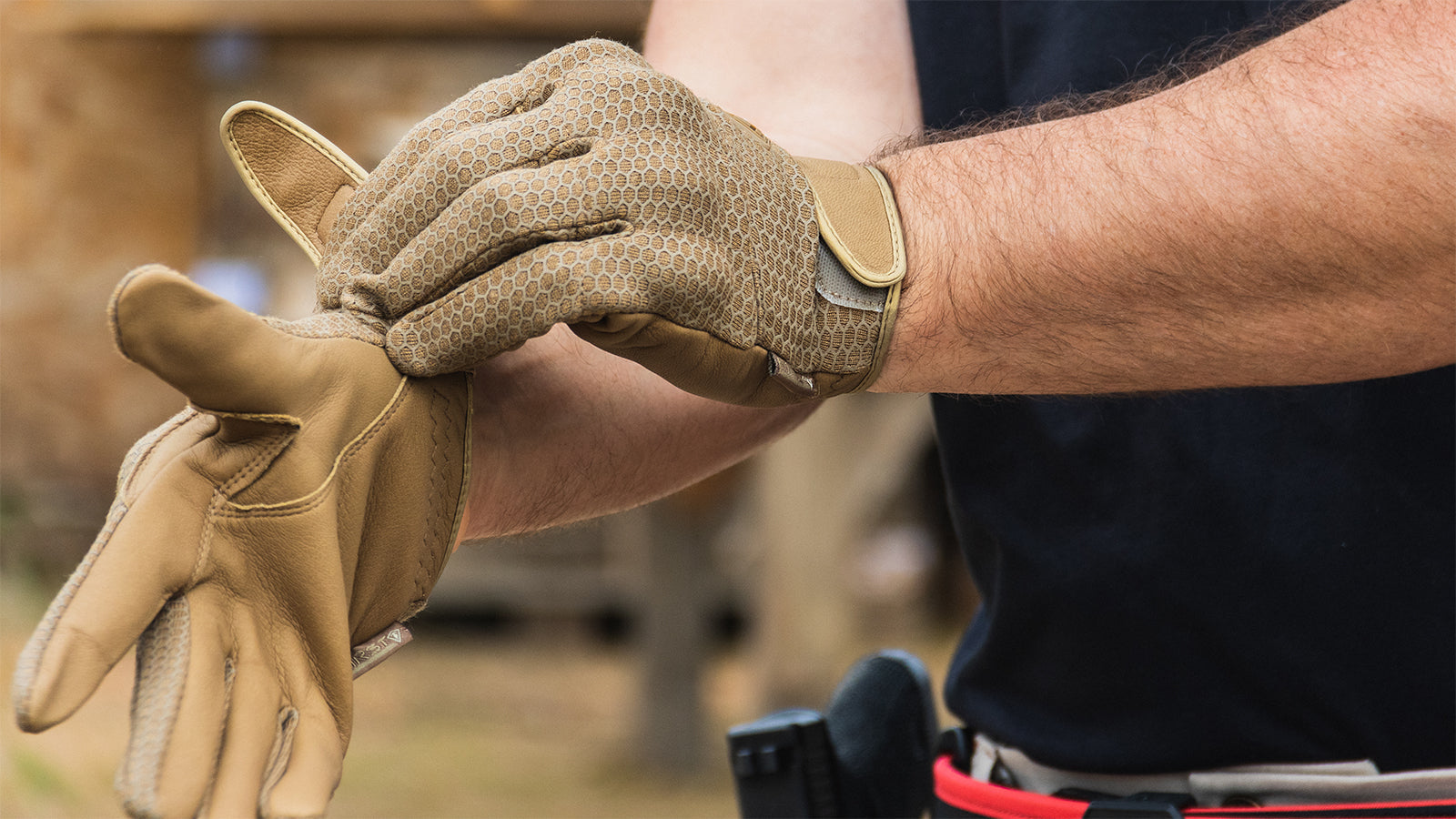Class A uniforms are the most formal dress uniforms worn by military and public safety personnel. They serve as a visible representation of professionalism, tradition, and rank. Whether you’re preparing for your first ceremony, replacing issued items, or upgrading your fit and finish, knowing what to look for is key to maintaining proper appearance and compliance.
Choosing the right Class A uniform means understanding the regulations specific to your military branch or public service role, ensuring a proper fit, and selecting authorized components that meet both appearance standards and ceremonial expectations.
Let’s break down the components, wear protocols, and key considerations for selecting the right Class A uniform.
Components and Specifications of Class A Uniforms
The service coat forms the centerpiece of the Class A uniform, manufactured from a dark blue poly-wool blend that maintains both durability and professional appearance. The coat features a four-button front closure with brass buttons, two breast pockets, and two lower patch pockets, all with button flaps. The material must maintain a weight of 18-20 ounces per linear yard to meet military specifications.
Trousers match the coat in both color and material, featuring a classic straight-leg cut with a slight break at the shoe. For female service members, an optional knee-length skirt is authorized, constructed from the same fabric as the coat. Both options include belt loops to accommodate the standard black dress belt with a brass buckle.
Headgear consists of the peaked service cap, featuring the appropriate branch insignia centered on the front. The cap's black visor must extend at a 45-degree angle, while the chin strap attaches with regulation brass buttons on each side.
Black Oxford dress shoes are the standard footwear, requiring a high-gloss finish. For female service members wearing skirts, black pumps with a heel height between 1/2 and 3 inches are permitted.
Proper placement of awards and decorations follows strict guidelines:
-
Medals are worn on the left breast, centered above the pocket
-
Ribbons not represented by medals are placed in rows above the medals
-
Unit insignia is displayed on the right sleeve, 1/4 inch below the shoulder seam
-
Branch insignia appears on both lapels
-
Name tag is positioned on the right breast pocket flap
-
Rank insignia is worn on both shoulders or collar points, depending on branch specifications
All metallic elements, including badges and insignia, must maintain a high-shine brass finish, free from tarnish or discoloration. Proper spacing between awards and decorations is measured at 1/8 inch, ensuring a clean, professional appearance.
Proper Wear Of a Class A Uniform
Occasions and Protocol
Class A uniforms serve as the military's formal service dress, worn during specific events that demand the highest level of professional presentation. Understanding when and how to wear these uniforms helps service members maintain military bearing and honor traditions.
Formal Events and Functions
Class A uniforms are required for formal military ceremonies, including promotion ceremonies, military weddings, award presentations, and official photographs. They're also worn during formal military balls, memorial services, and when representing the military at civilian functions. For official meetings with senior leadership or distinguished visitors, Class A uniforms are often mandatory.
Proper Wear and Bearing
When wearing Class A uniforms, service members must maintain proper military bearing. This includes standing straight with shoulders back, walking with purpose, and keeping hands out of pockets. The uniform should be worn complete - missing items or mixing with other uniform classes isn't permitted unless specifically authorized by command.
Weather and Service Variations
While Class A uniforms are primarily indoor attire, service members may need to wear them in various weather conditions. Each branch has specific guidance on appropriate outer garments. The Army's Class A includes a long-sleeve shirt and tie, while the Marine Corps' equivalent features distinct forest green fabric. The Air Force and Navy have their own unique specifications for formal dress uniforms, reflecting each service's heritage.
How to Choose the Right Class A Uniform for Your Role
Selecting the appropriate Class A uniform isn’t just about purchasing what's available, it’s about making sure your uniform reflects your service, rank, and branch regulations accurately. Here's how to make the right choice:
Know Your Branch Requirements
Each branch (Army, Marine Corps, Navy, Air Force) has its own Class A dress code.
Army (AR 670-1 – Army Green Service Uniform, AGSU)
-
Jacket & Trousers: Dark olive green wool-blend; trousers or skirt for female soldiers.
-
Shirt & Tie: Light tan long-sleeve shirt with tan tie.
-
Footwear: Black dress oxfords or pumps (shined).
-
Insignia: Brass U.S. insignia on lapels, nameplate on right pocket, rank and unit patches.
-
Headgear: Heritage-style service cap or garrison cap.
Marine Corps (MCO 1020.34H – Dress Blue “A” Uniform)
-
Jacket & Trousers: Midnight blue coat with red piping and gold buttons; sky blue trousers.
-
Shirt & Tie: White dress shirt with black tie.
-
Footwear: Black corfam oxfords or pumps (high-gloss).
-
Insignia: Eagle, Globe, and Anchor on collar; medals worn over left pocket.
-
Headgear: White peaked service cap (with EGA insignia).
Navy (NAVPERS 15665I – Service Dress Blue)
-
Jacket & Trousers: Black wool-blend jumper or coat with 13-button trousers.
-
Shirt & Tie: White dress shirt with black necktie or tab tie.
-
Footwear: Black dress shoes (shined).
-
Insignia: Rating badge on left sleeve; service stripes and warfare pins as applicable.
-
Headgear: White combination cap.
Air Force (AFI 36-2903 – Service Dress Uniform)
-
Jacket & Trousers: Dark blue poly-wool blend coat and trousers/skirt.
-
Shirt & Tie: Light blue long-sleeve shirt with blue tie/tab.
-
Footwear: Black Oxford shoes or heels.
-
Insignia: U.S. insignia on lapels, ribbons over left breast, chevrons on sleeves.
-
Headgear: Blue flight cap or service cap.
Select the Right Fit
Uniforms must be tailored for a clean, professional silhouette.
-
Jacket: Shoulders should align perfectly with your own, and sleeves should show about ¼ inch of shirt cuff.
- Trousers: Aim for a slight break over the top of your dress shoes.
-
Skirts (if applicable): Should fall just above the knee, per regulation.
Consider getting professionally measured for optimal fit.
For added comfort and professionalism, consider pairing your uniform with a high-quality undershirt. A breathable base layer like the Tactix Cotton T-Shirt offers moisture control and a tailored fit under your Class A shirt, ideal for long ceremonies or inspections.
Choose Gender-Appropriate and Authorized Variations
Female personnel may have options between skirts and trousers. Authorized footwear (heels vs oxfords), headgear sizes, and shirt styles may also differ by gender and branch.
Verify Required Insignia and Decorations
Class A uniforms must display correct insignia, badges, ribbons, and rank, with strict placement guidelines. Ensure your selections match your rank and service record.
Consider Quality and Source
Uniform items can range from government-issued to higher-end options. While all components must meet regulation standards, opting for better-quality materials may improve comfort and appearance. Always purchase from verified uniform suppliers.
Look Ahead to Upcoming Events
Consider what ceremonies, photos, or inspections may be coming up in the next year and ensure your uniform is complete and ready in advance.
How To Maintain Your Class A Uniform
The proper fit of a Class A uniform starts with precise measurements.
-
Sleeves should end at the wrist bone when arms are at rest, with approximately ¼ inch of shirt cuff visible beyond the jacket sleeve.
-
Shoulders need to align perfectly with the natural shoulder line – the jacket seam should sit right at the edge of your shoulder without extending over or falling short.
-
For trousers, aim for a slight break where the fabric meets your shoes, creating a small fold at the front of the pant leg.
Maintaining Class A uniforms requires careful attention to detail. Dry cleaning is recommended for the jacket and trousers every 2-3 wearings, while shirts can be machine-washed in cold water and pressed. Store uniforms on sturdy wooden hangers, with pants properly creased and hung full-length. Cover garments with breathable garment bags when not in use, and avoid plastic covers, which can trap moisture.
When pressing your uniform, use a clean pressing cloth and moderate heat. Start with the collar and shoulders, then move to the sleeves and body of the jacket. Maintain sharp trouser creases by pressing from the top down, ensuring the crease runs straight through the center of the leg.
For seasonal care, protect wool uniforms from moths during summer storage using cedar blocks or moth repellent. In humid conditions, use dehumidifiers in storage areas to prevent moisture damage. During winter, brush uniforms after each wear to remove salt residue that can damage fabric fibers.
Common Violations For Class A Uniforms
Common violations include wrinkled uniforms, improper trouser length, misaligned insignia, and scuffed footwear. Before inspections, check all brass items for tarnish, ensure the geometric alignment of badges and ribbons, and verify that all garments are clean and properly pressed.
Conclusion
Choosing the right Class A uniform starts with understanding your role, your branch’s regulations, and the importance of every detail, from shoulder seams to polished brass. This uniform isn’t just a requirement, it’s a reflection of your service and dedication.
A complete and properly fitted Class A uniform helps you present yourself with confidence and respect for tradition. From the first fitting to final inspection, each piece plays a role in showcasing the professionalism expected of uniformed personnel.











